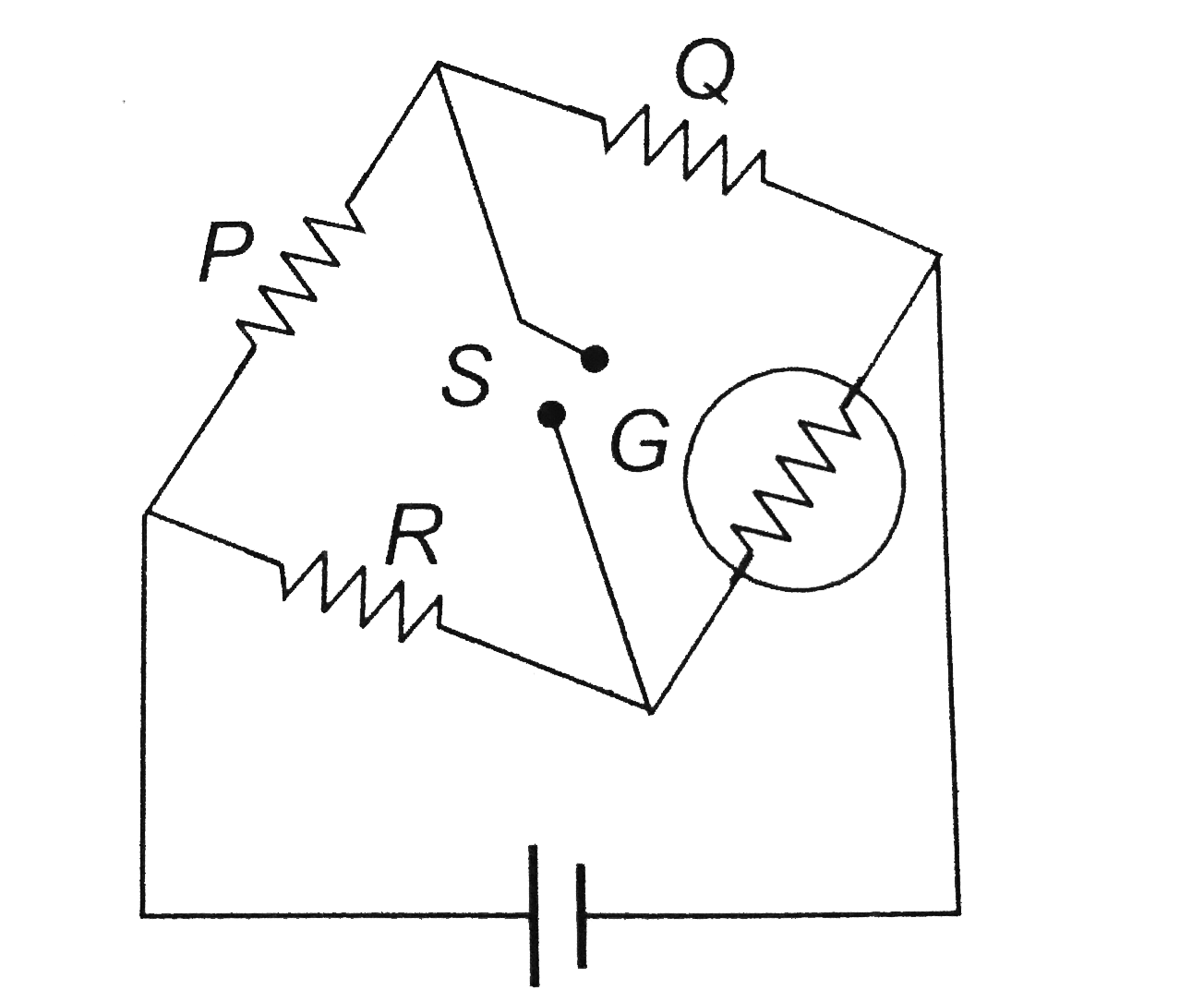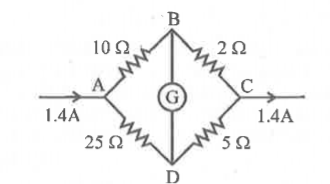A teacher in his physics laboratory allotted an experiment to determine the resistance (G) a galvanometer. Students took the observations for deflection in the galvanometer. Which of the below is true for measuring value of G?
deflection method cannot be used for determining the resistance of the galvanometer.
deflection method can be used and in this case the G equals to twice the value of shunt resistance(s).
deflection method can be used and in this case, the G equals to three times the value of shunt resistance(s).
deflection method can be used and in this case the G value equals to the shunt resistance(s).
The correct Answer is:B
To determine the resistance G of a galvanometer using the 1/3 deflection method, we can follow these steps:
1. Understand the Setup:
The galvanometer has a resistance G and is connected in a circuit with a known resistance S. The current flowing through the circuit causes a deflection in the galvanometer.
2. Deflection Condition:
For a galvanometer, the deflection θ is proportional to the current Ig flowing through it. The relationship can be expressed as:
IgI=SS+G
where I is the total current in the circuit.
3. Using the 1/3 Deflection:
Given that the deflection is 13, we can set up the equation:
IgI=13
This implies:
SS+G=13
4. Cross-Multiplying:
Cross-multiplying gives:
3S=S+G
5. Rearranging the Equation:
Rearranging the equation results in:
G=3S−S=2S
6. Conclusion:
Thus, the resistance G of the galvanometer is twice the resistance S of the standard resistor used in the circuit.
Final Result:
The correct statement regarding the measurement of G using the 1/3 deflection method is:
G=2S
The galvanometer has a resistance G and is connected in a circuit with a known resistance S. The current flowing through the circuit causes a deflection in the galvanometer.
For a galvanometer, the deflection θ is proportional to the current Ig flowing through it. The relationship can be expressed as:
IgI=SS+G
where I is the total current in the circuit.
Given that the deflection is 13, we can set up the equation:
IgI=13
This implies:
SS+G=13
Cross-multiplying gives:
3S=S+G
Rearranging the equation results in:
G=3S−S=2S
Thus, the resistance G of the galvanometer is twice the resistance S of the standard resistor used in the circuit.
The correct statement regarding the measurement of G using the 1/3 deflection method is:
G=2S
Topper's Solved these Questions
- JEE MAINS 2022BOOK - JEE MAINS PREVIOUS YEARCHAPTER - JEE MAINS 2022EXERCISE - PART : PHYSICS
30 Videos
- JEE MAINS 2022BOOK - JEE MAINS PREVIOUS YEARCHAPTER - JEE MAINS 2022EXERCISE - PHYSICS (SECTION -A)
20 Videos
- JEE MAINS 2022BOOK - JEE MAINS PREVIOUS YEARCHAPTER - JEE MAINS 2022EXERCISE - Physics-Section B
10 Videos
- JEE MAINS 2021BOOK - JEE MAINS PREVIOUS YEARCHAPTER - JEE MAINS 2021EXERCISE - Physics (Section B )
10 Videos
- JEE MAINS 2023 JAN ACTUAL PAPERBOOK - JEE MAINS PREVIOUS YEARCHAPTER - JEE MAINS 2023 JAN ACTUAL PAPEREXERCISE - Question
360 Videos
Similar Questions
Knowledge Check
In an experiment to determine the resistance of a galvanometer by half deflection method, the circuit shown is used. In one set of readings , if R=10ΩS=4Ω, then the resistance of the galvanometer is
 A203ΩB403ΩC503ΩD703Ω
A203ΩB403ΩC503ΩD703ΩIn a circuit 5 percent of total current passes through a galvanometer. If resistance of the galvanometer is G then value of the shunt is
A19GB20GCG20DG19The resistance of galvanometer is G ohm and the range is 1 volt. The value of resistance used to convert it into a voltmeter of range 10 volt is :–
A9GBGC19GD10 G
In the circuit the galvanometer G shows zero deflection. If the batteries A and B have negligible internal resistance find the value of the resitor R

View SolutionThe resistance of galvanometer is g ohm and the range is 1 volt. The value of resistance used to convert it into a voltmeter of ragne 10 volt is:-
View SolutionThe firgure shows a circuit diagram of a 'Wheatstone Bridge' to measure the resistance G of the galvanometer The relation PQ=RG will be satisfied only when

View SolutionA 50Ω resistance is connected to a battery of 5 V. A galvanometer of resistance 100Ω is to be used as an ammeter to measure current through the resistance, for this a resistancer rs is connected to the galvanometer. Which of the following connections should be employed if the measured current is within 1% of the current without the ammeter in the circuit?
View SolutionA galvanometer of resistance 50Ω is converted into an ammeter by connecting a low resistance (shunt) of value 1Ω in parallel to the galvanometer, S. If full - scale deflection current of the galvanometer is 10 mA, then the maximum current that can be measured by the ammeter is -
View Solution


